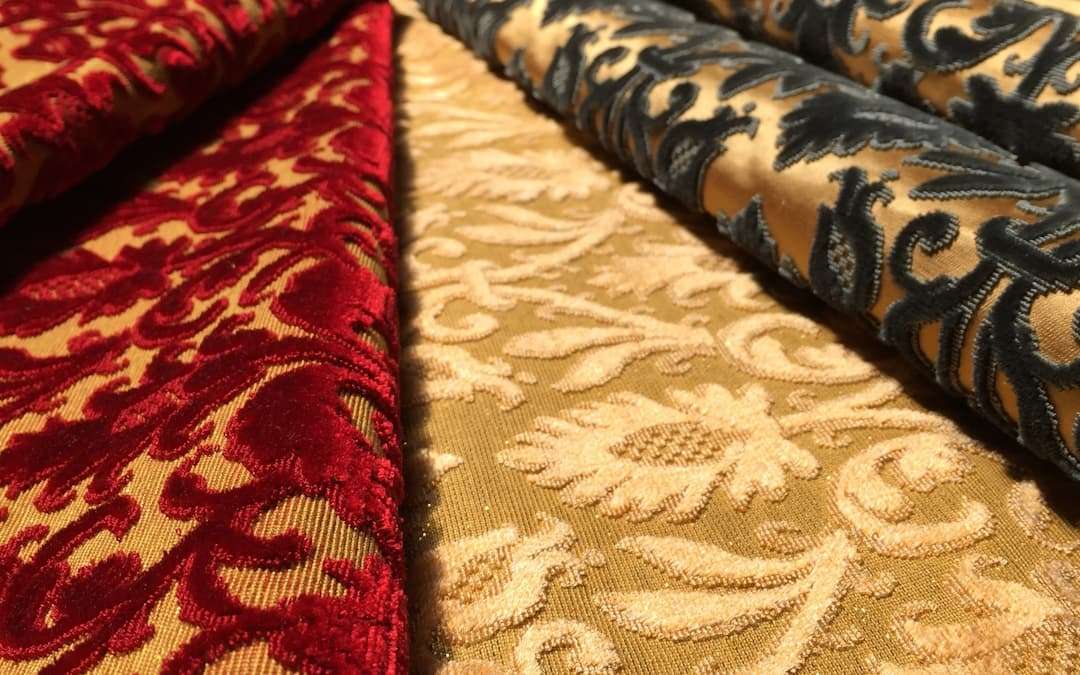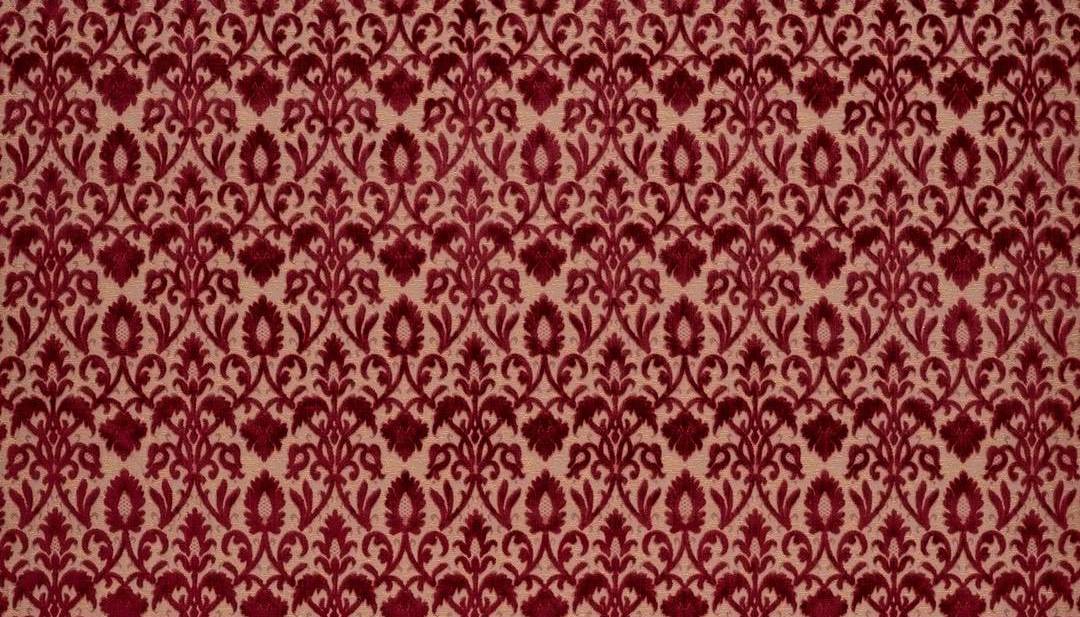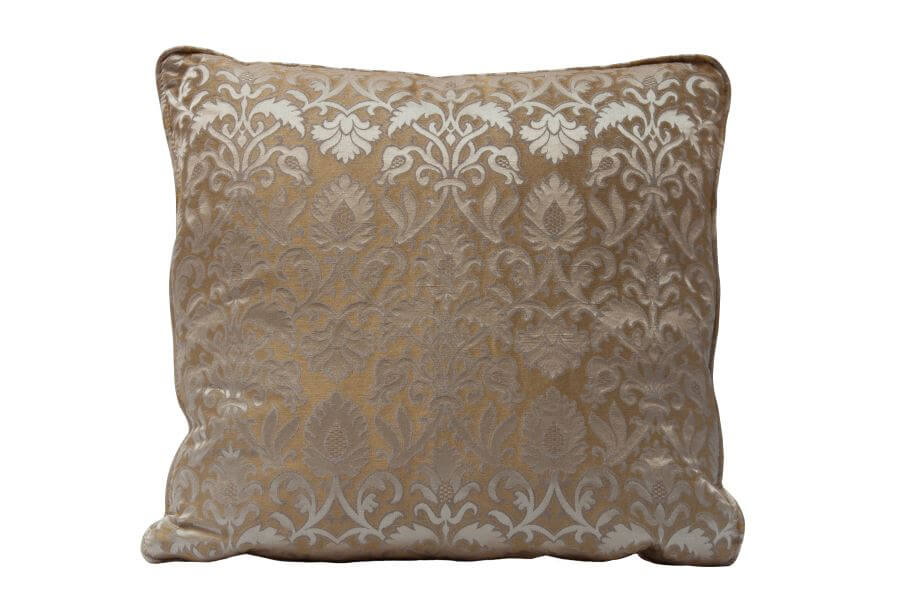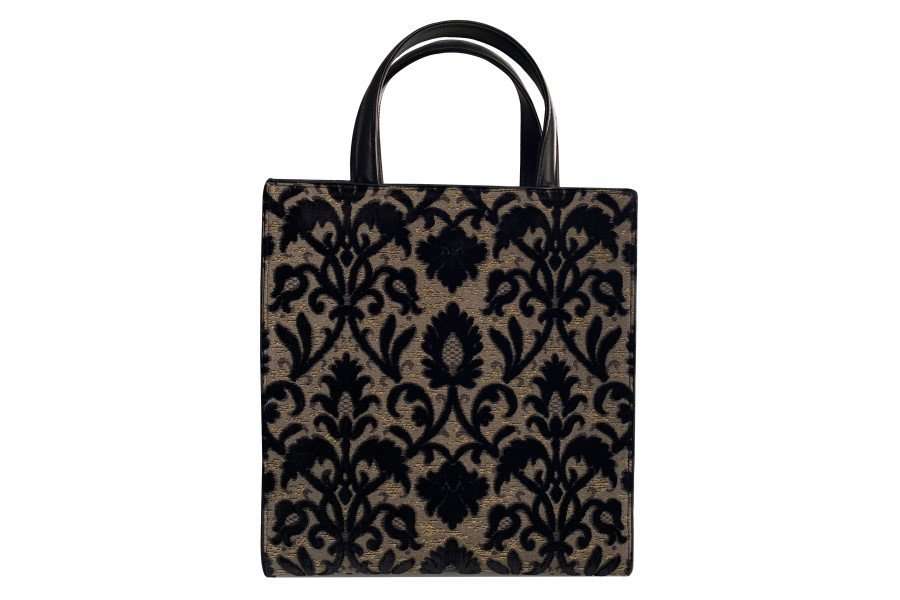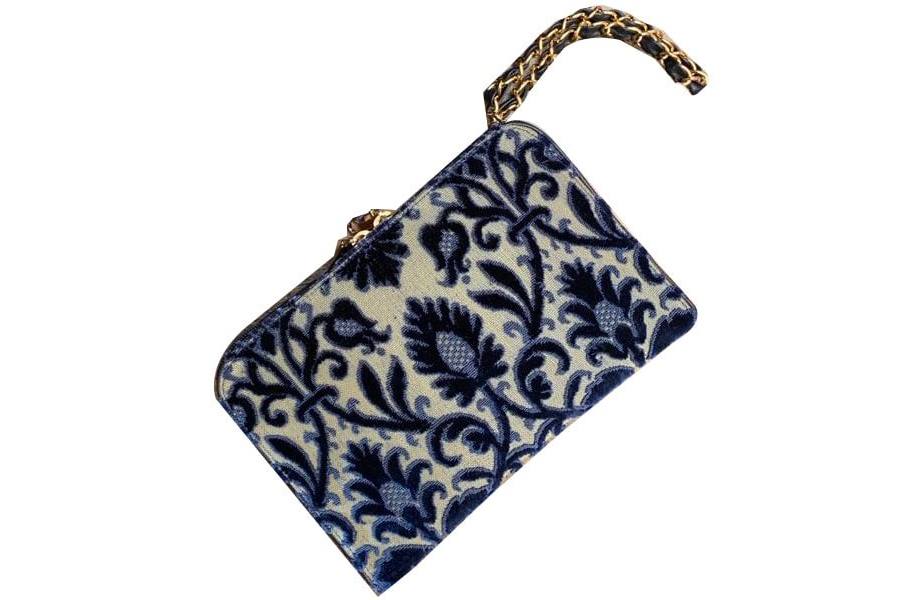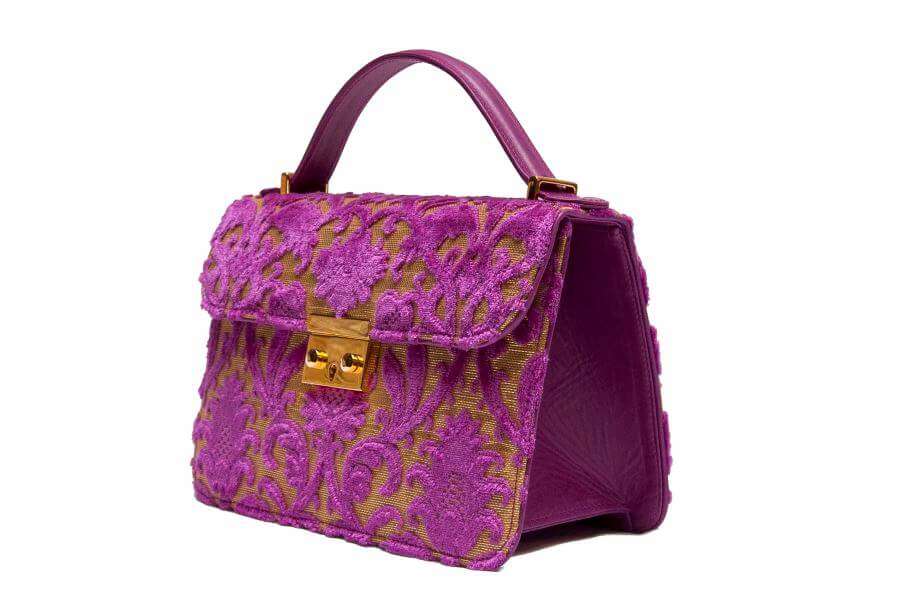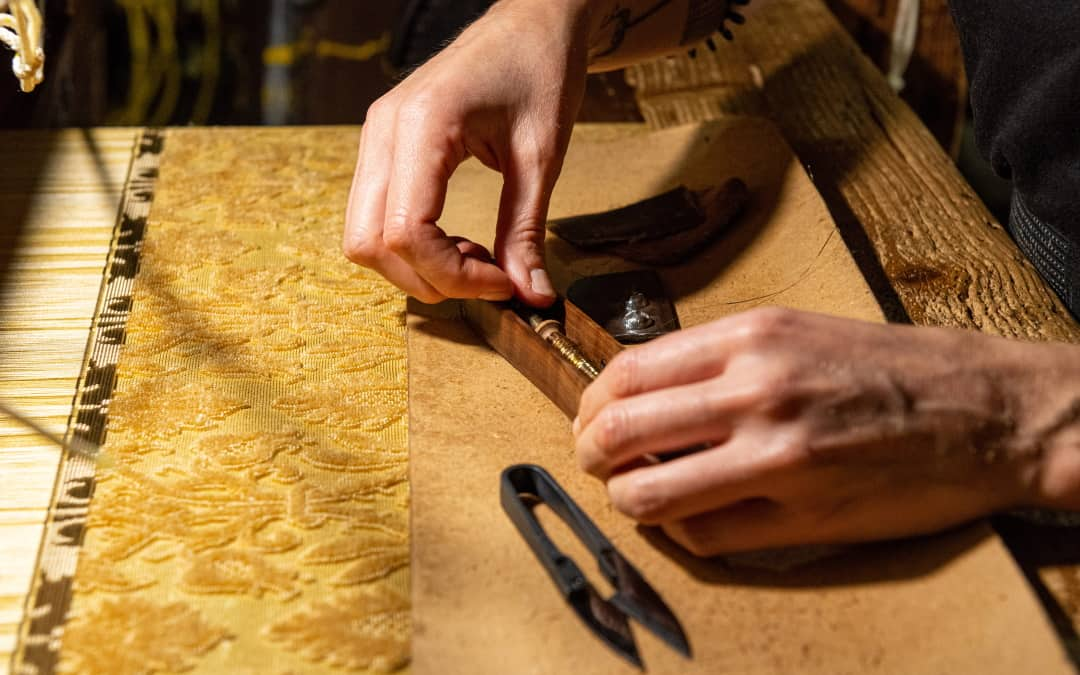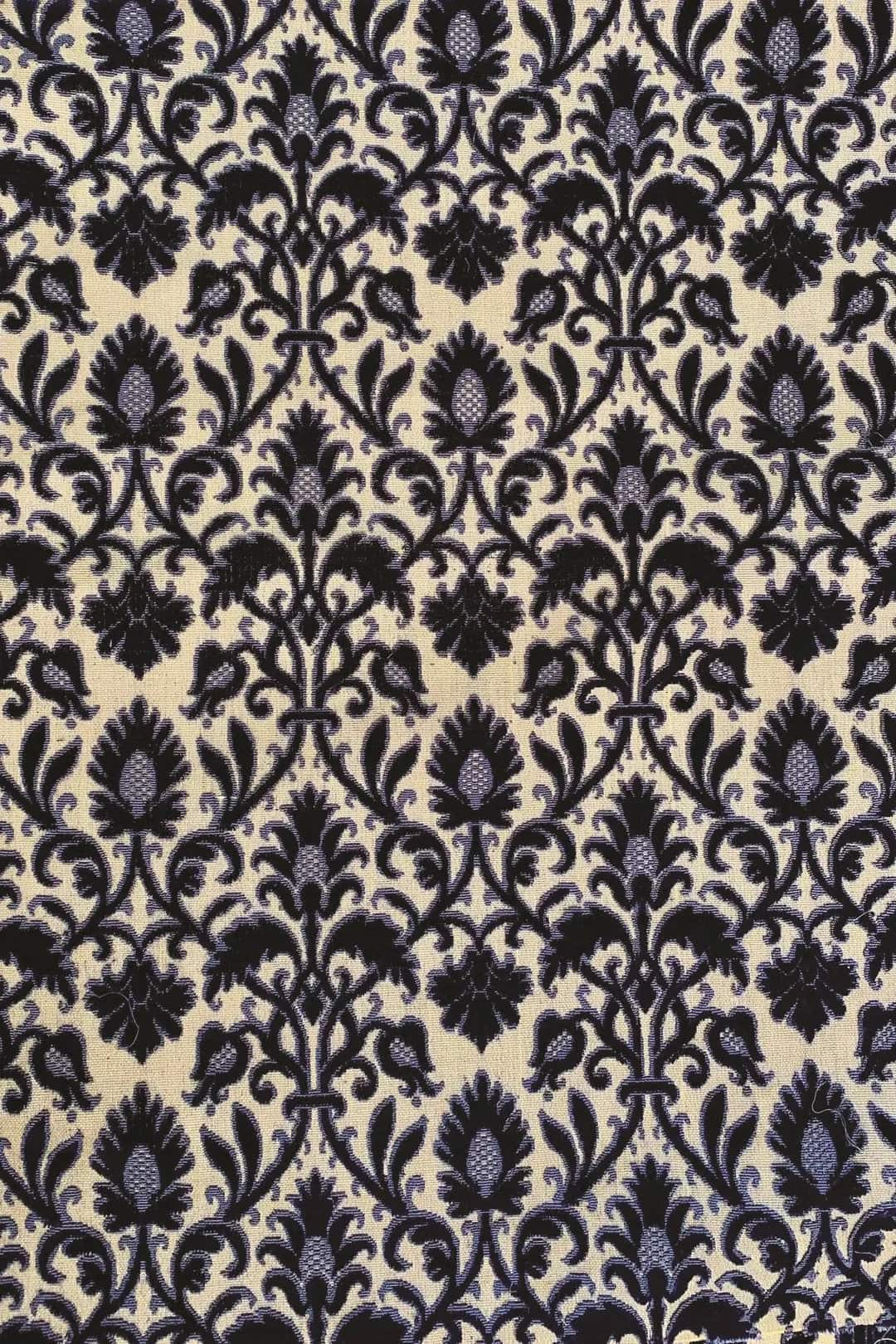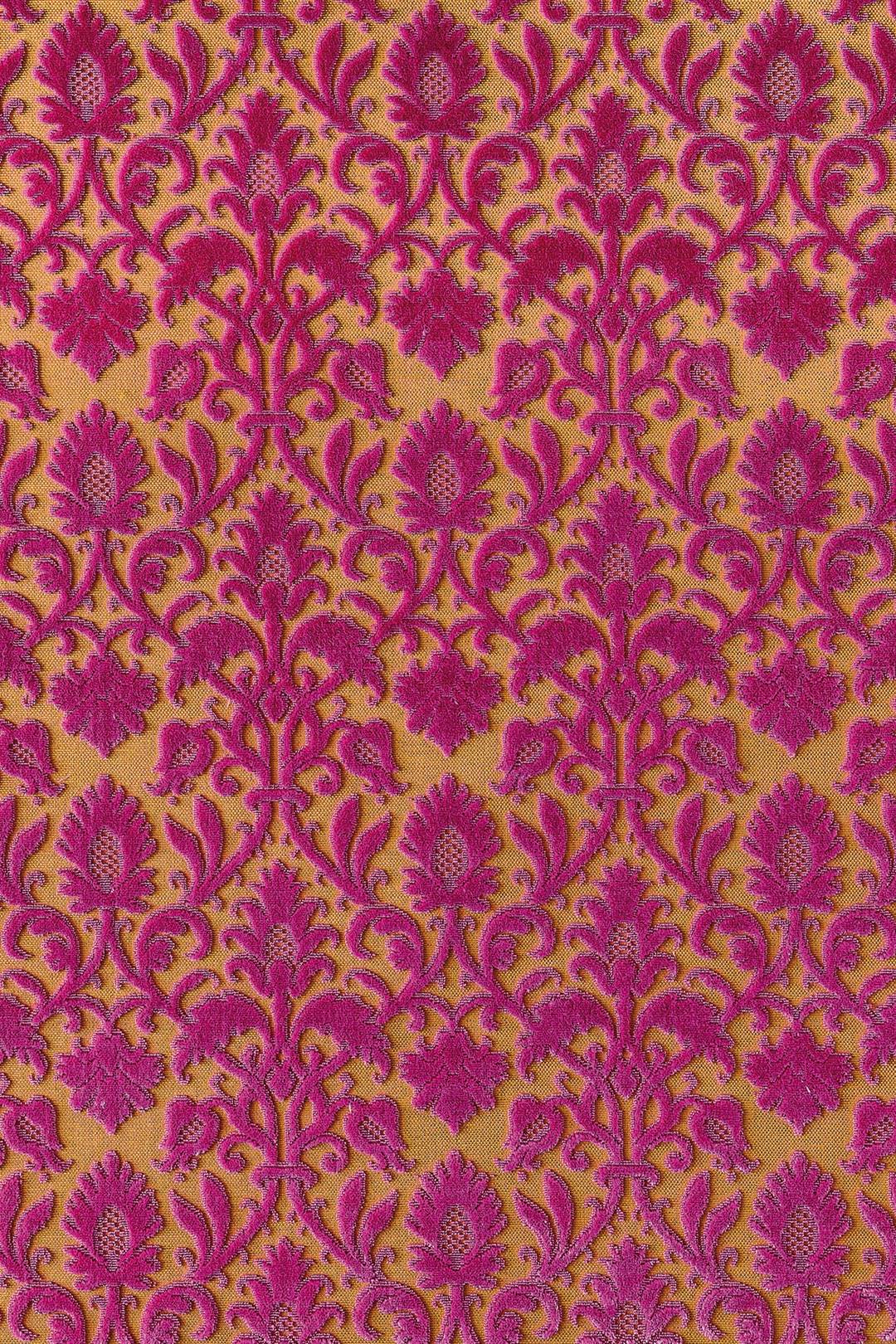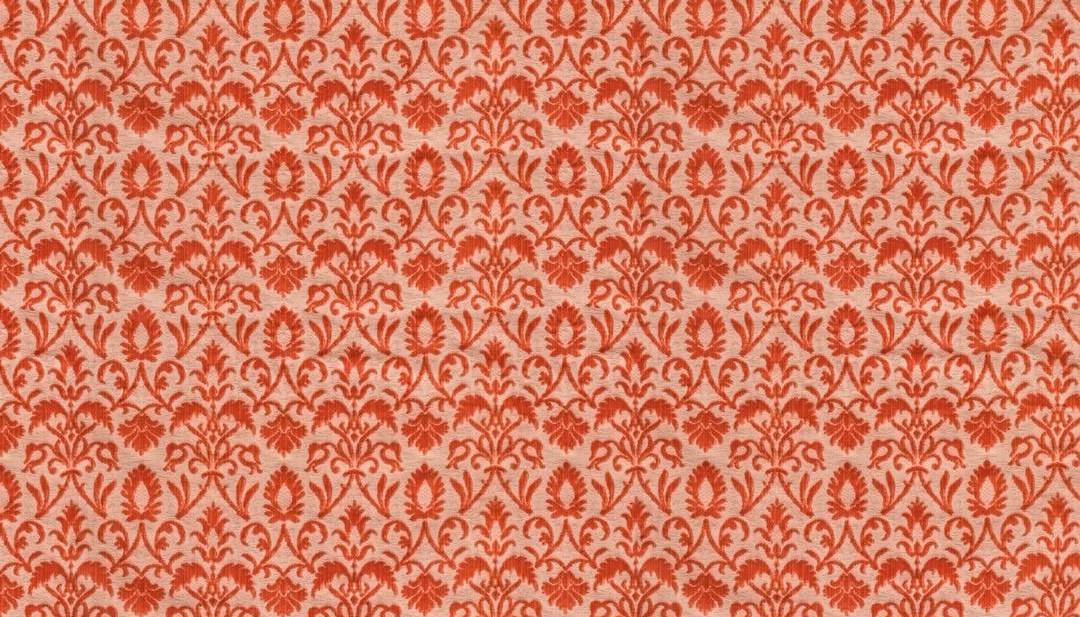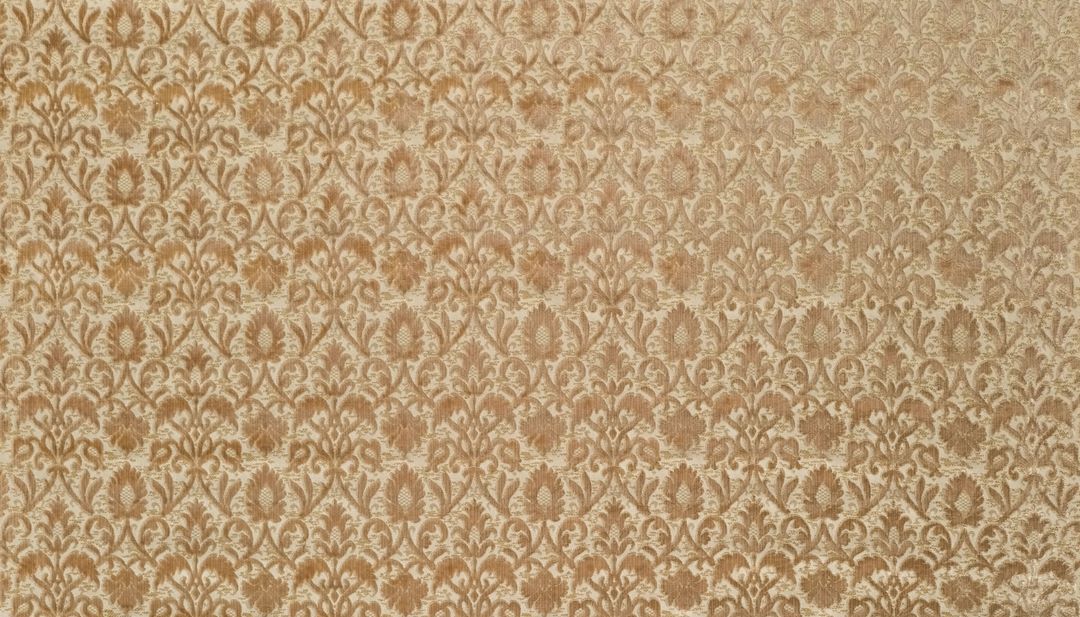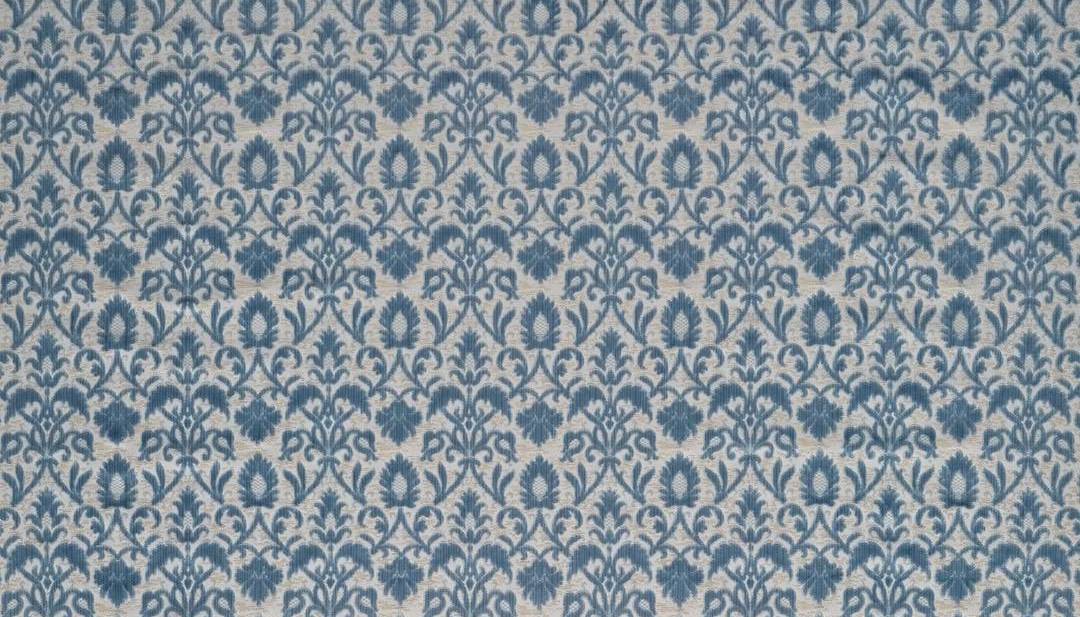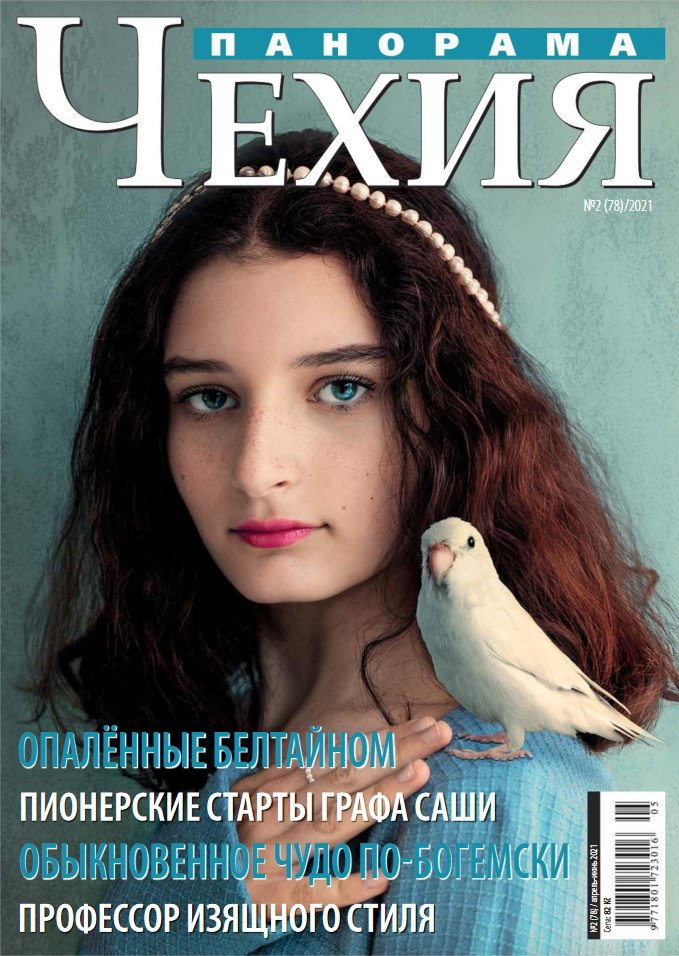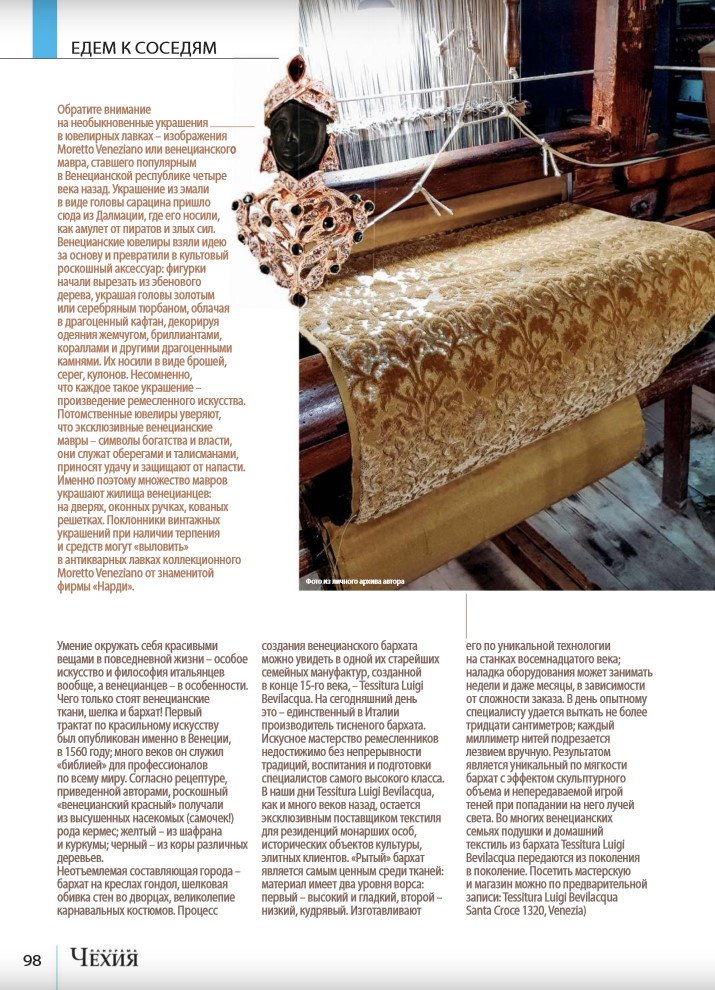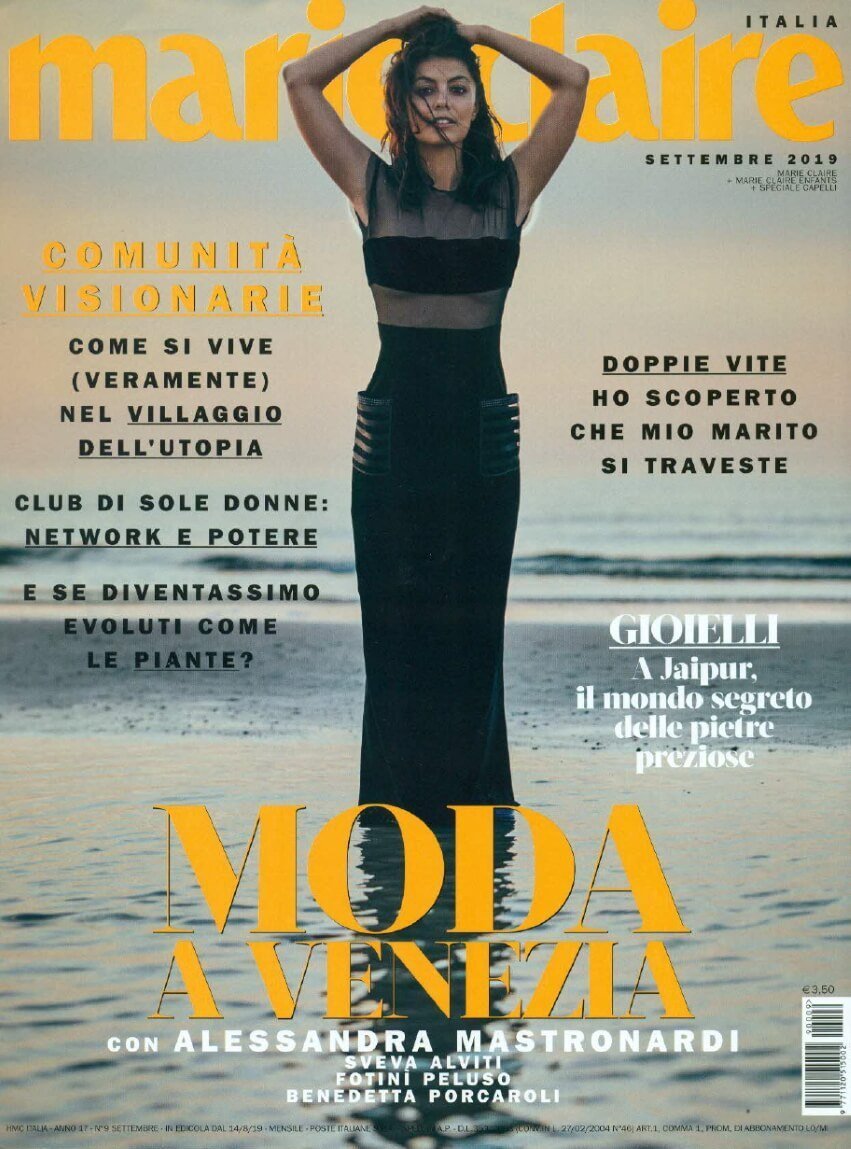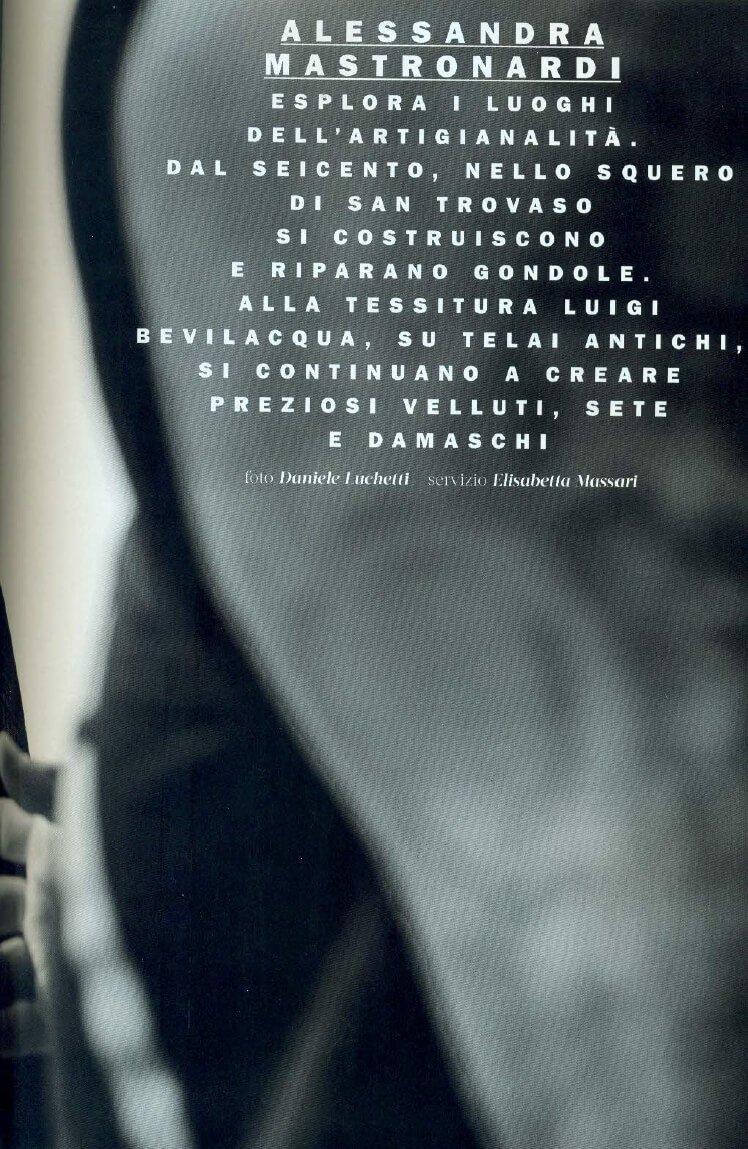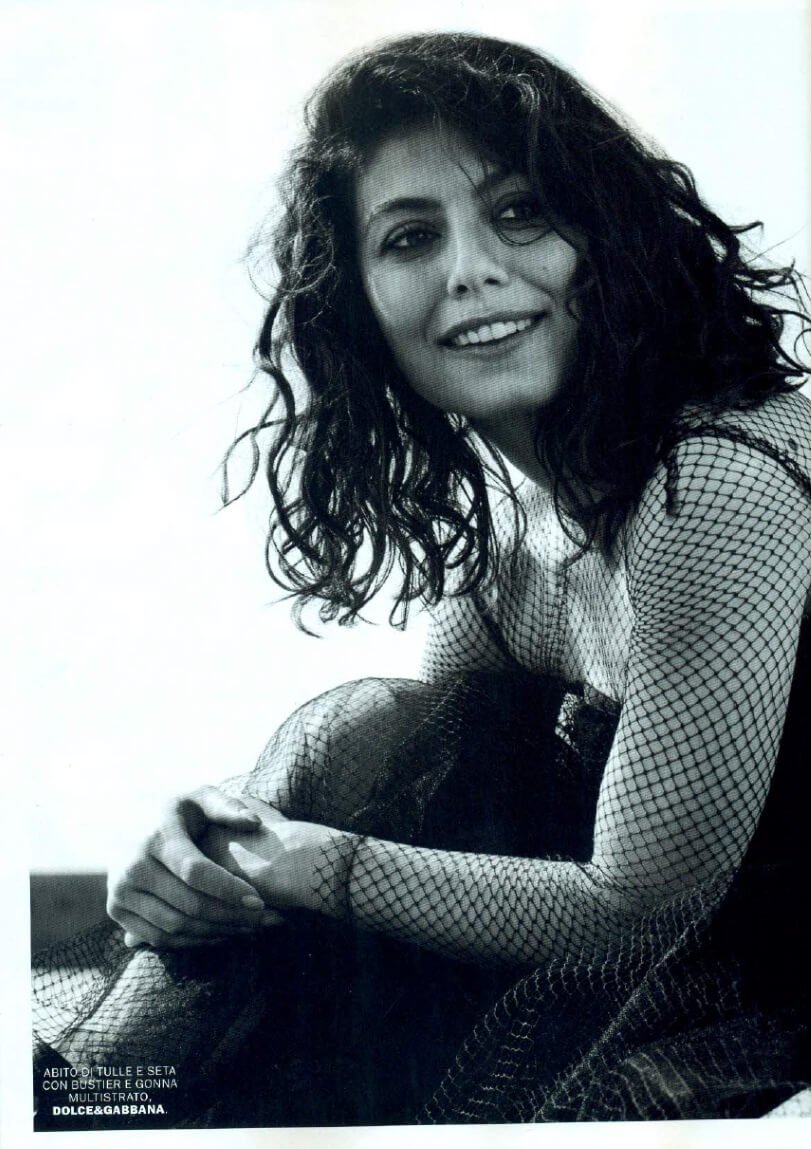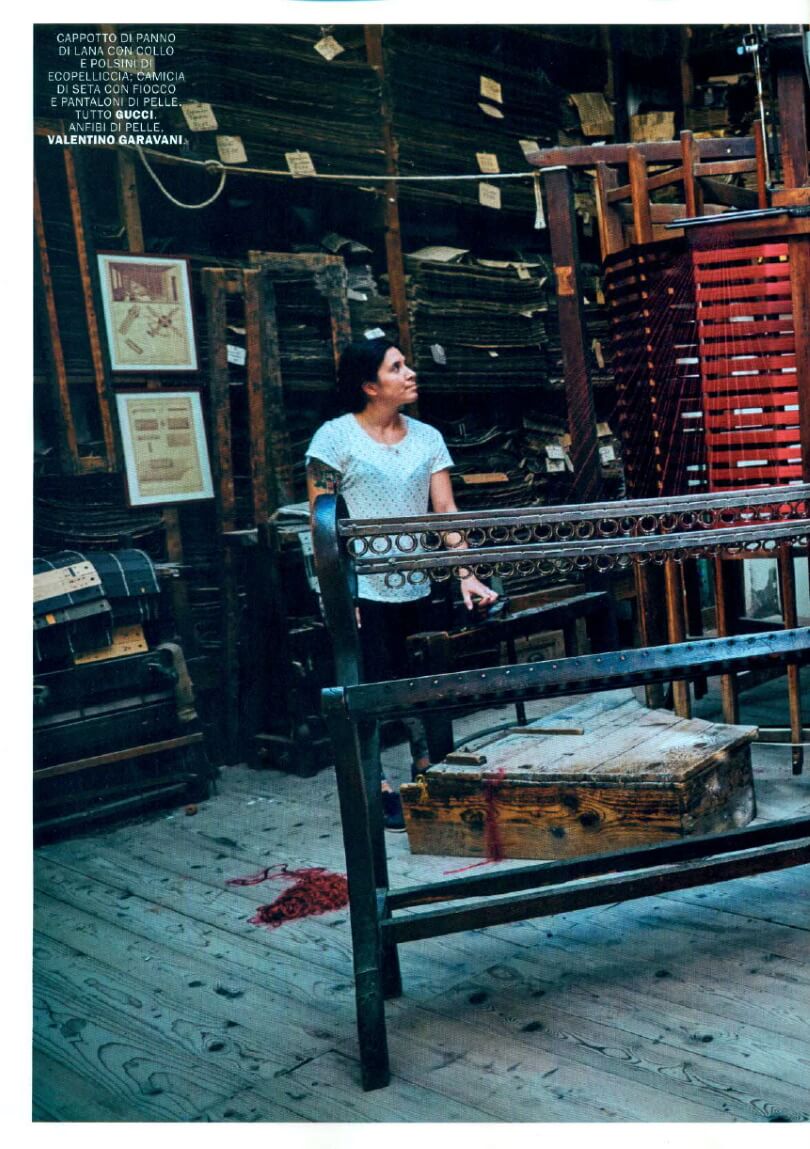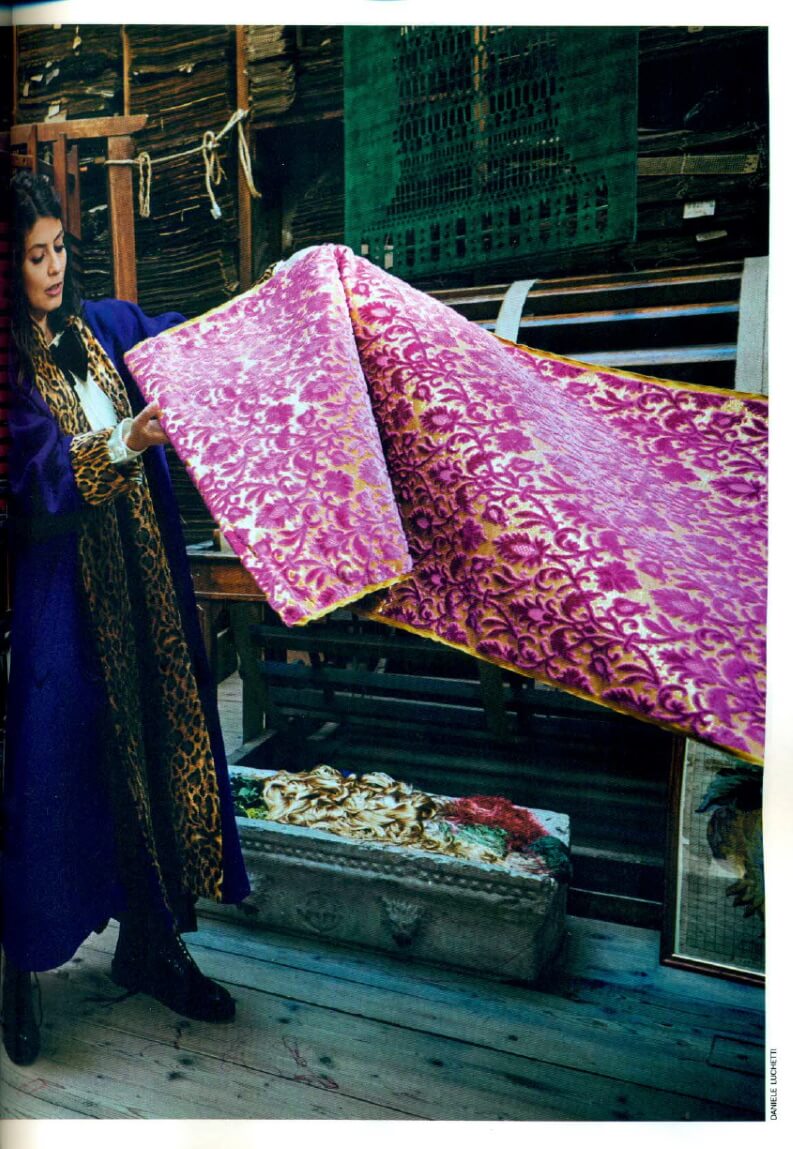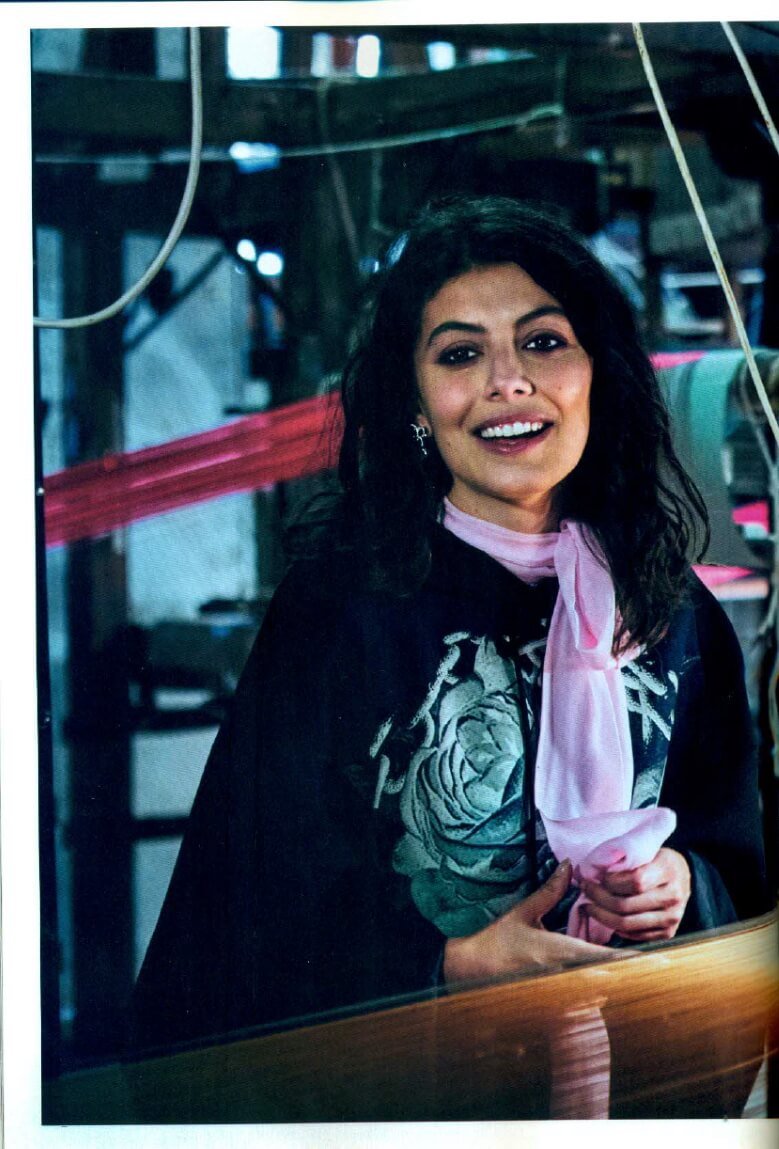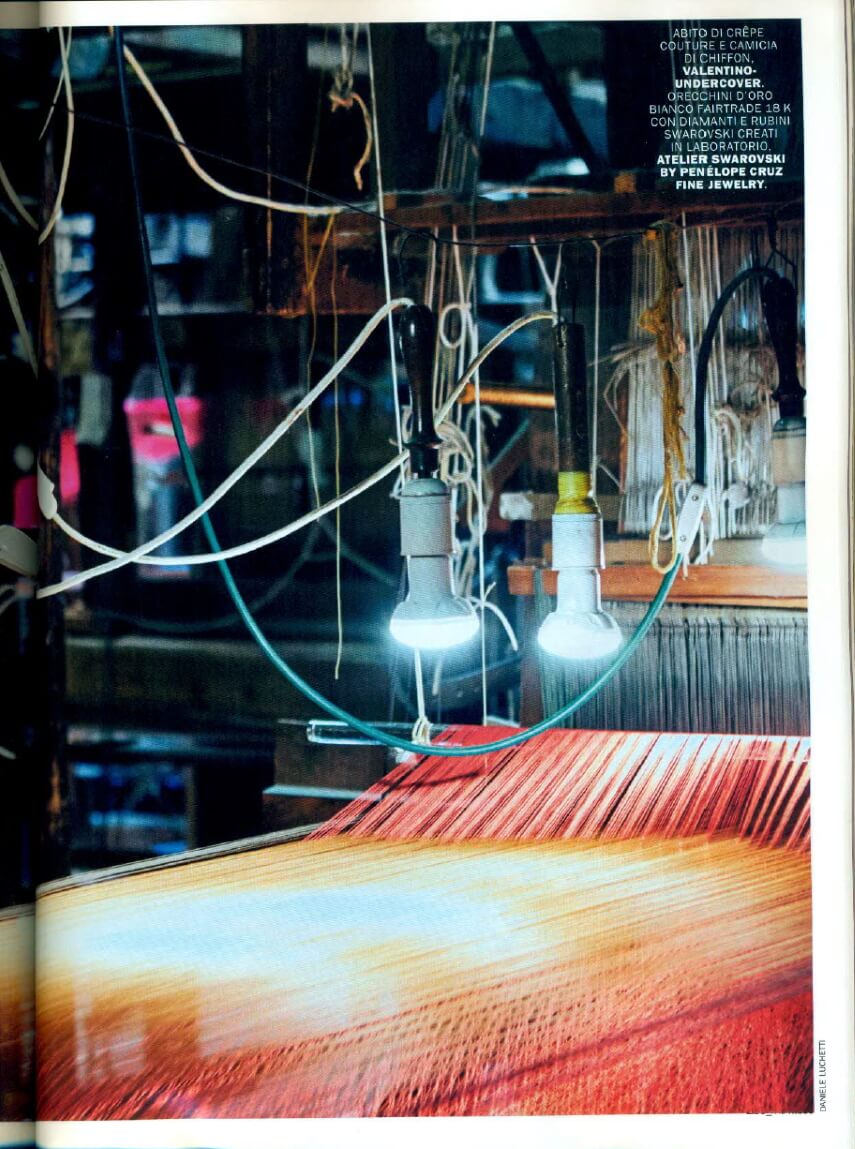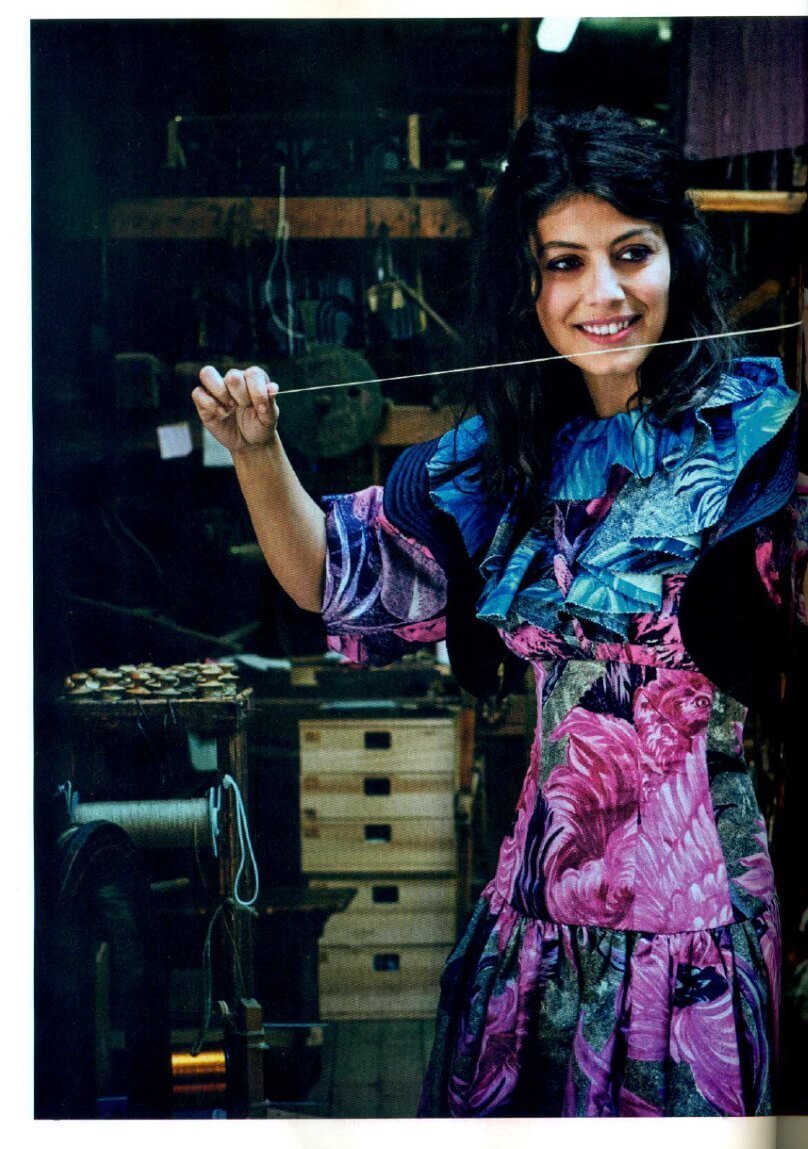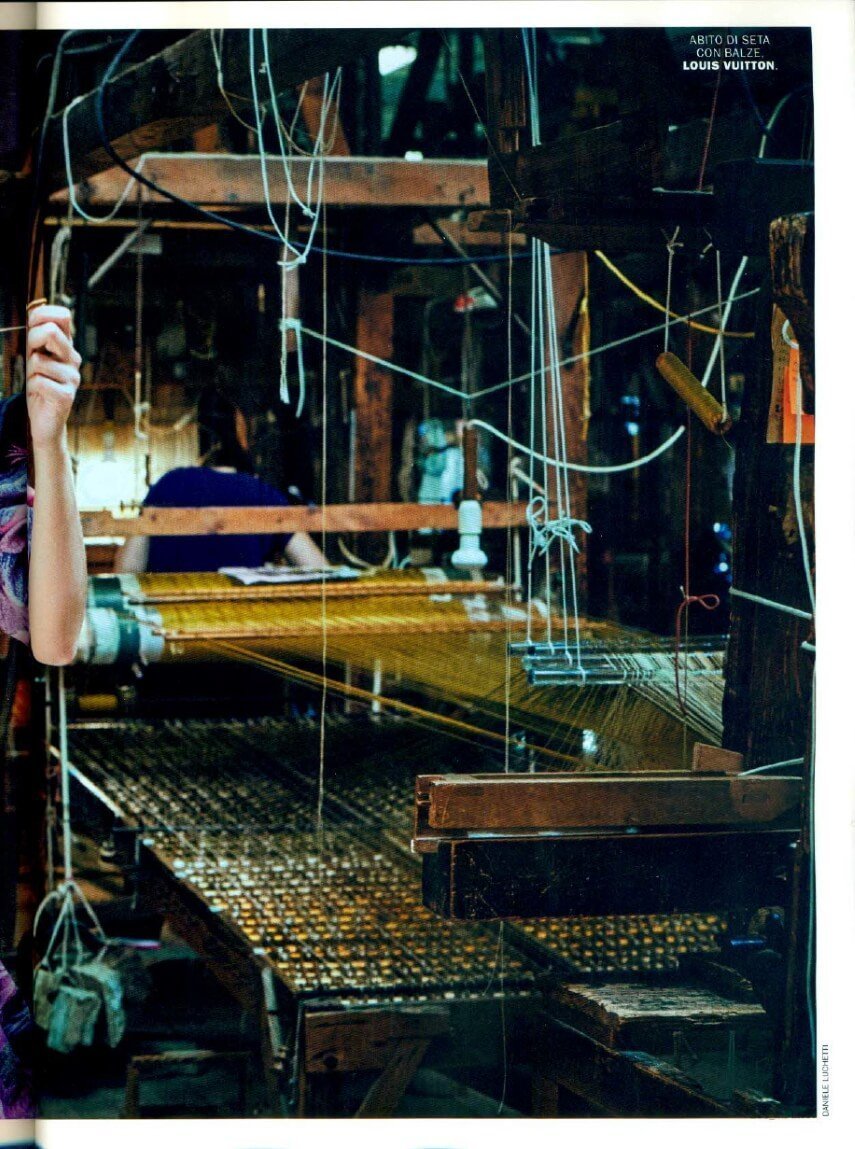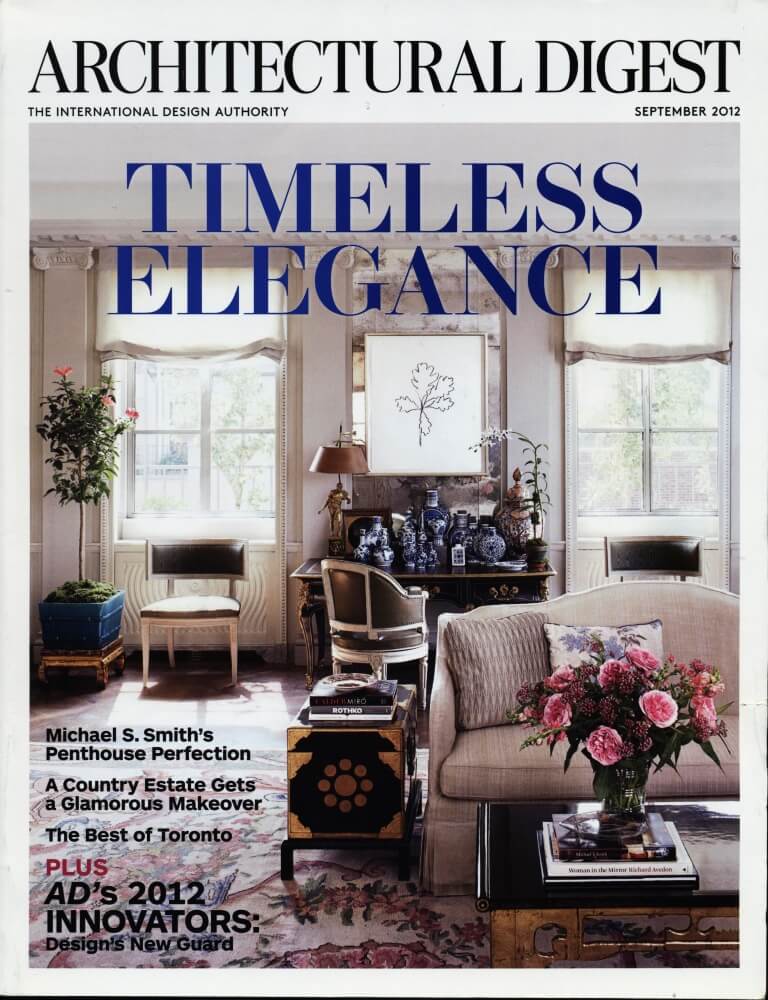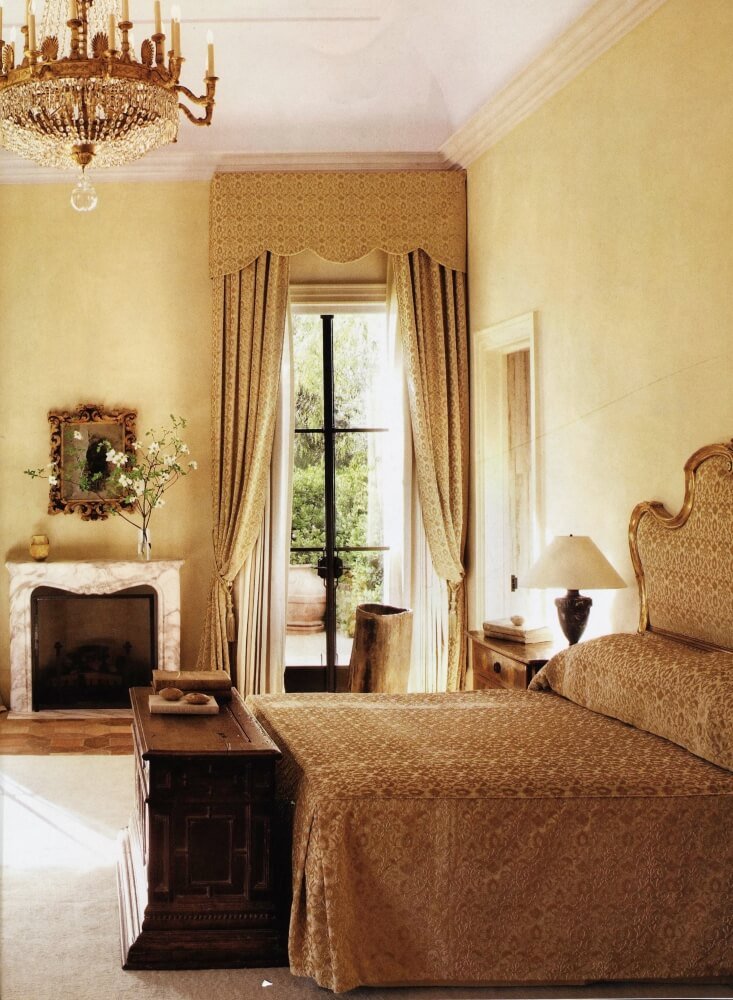There was a time in history when upholstery fabrics and clothing fabrics became more distinct: the 16th century. Today we are going to take you back in time to introduce you to one of our most popular velvets, also handmade in the soprarizzo version: the Rinascimento (Renaissance) velvet.
The Rinascimento Decorative Pattern
The design of the Oriental-inspired Rinascimento velvet features subtle sprouts with leaves of various shapes that alternately intertwine and separate to form an ogival grid pattern. Enclosed within are simplified versions of the most characteristic flowers of Renaissance patterns: carnations, lotus and thistle blossoms, and, above all, pomegranates.
These flowers and fruits have symbolic meanings: the pomegranate is associated with immortality, while the carnation and thistle recall Christ’s passion and salvation. The thistle, in fact, is a flower covered with thorns, and the seeds of the carnation recall the shape of nails.
The pattern is repeated four times along the height of the fabric. The structure of the pattern, the choice of naturalistic elements, their stylized representation, and the modular ratio are all typical of Italian clothing fabrics of the last quarter of the 16th century.
The same pattern can be found in our catalog in the Rinascimento soprarizzo velvet (handmade) and the Rinascimento heddle velvet. With the same pattern, we also make the Rinascimento brocatelle.
Rinascimento Heddle Velvet – Pomegranate
You can find the Rinascimento pattern in home accessories such as the Rinascimento velvet pillow and the Rinascimento brocatelle pillow.
In this pattern, we also make some of the bags in our collection: the iconic Bevilacqua Tote Bag, the elegant Bianca clutch bag, and the adorable Anna mini bag, just to name a few.
Rinascimento Velvet: Technical Specifications and Available Colors
As we have just mentioned, Rinascimento velvet is offered in two types: soprarizzo velvet and heddle velvet. Let’s find out their characteristics.
Rinascimento Soprarizzo Velvet
Soprarizzo is a virtuosity in working with Venetian velvets, of which we are the only producers in the world. It is a unique and inimitable velvet that embodies the essence of luxury in its exclusivity. Its fine workmanship is characterized by the presence, in the velvet itself, of cut and curly hair.
Manual production of Rinascimento Soprarizzo Velvet
Rinascimento Soprarizzo velvet is a fabric for exclusive projects, thanks to its fine workmanship, hand-woven on original 18th-century looms, and its elegant design. It is important to note that the pattern that emerges from the ground is made of a monochrome silk yarn that appears as two different shades due to the different refraction of light on the cut and curly velvet.
The height of the fabric is about 60 cm and the ratio is about 18 cm. The colors offered are a sophisticated blue and a sumptuous fuchsia.
Rinascimento Heddle Velvet
Rinascimento heddle velvet is made of silk and cotton yarns and embellished with a metallic yarn that gives elegant shiny highlights. The height of the fabric is 130 cm and the ratio is 17 cm. The range of colors in which it is offered is very wide, making it ideal for a variety of projects. From warmer tones like coral and red, to neutrals like ivory and light blue, to cooler tones like celeste and jade.
History And Interesting Facts About Rinascimento Velvet
In the second half of the 16th century, the tendency of the wealthy classes to show off their wealth, including through extraordinary fabrics, was particularly pronounced. They were used in buildings, for walls, seats, cushions, curtains, and clothing. The latter became increasingly precious and featured cuts that revealed other contrasting fabrics underneath, decorations with pearls and other jewels, and elaborate patterns.
The distinction between fabrics used for clothing and those used for upholstery, which had not existed before, was made during this period.
Soprarizzo or cesellato velvet was the preferred type from this time onward. As for the decorative elements, naturalistic and floral motifs were the protagonists: long undulating stems accompanied by stylized but extremely elaborate flowers and leaves in a lattice-like structure. This was applied to both upholstery and clothing fabrics, although the designs were smaller.
Rinascimento velvet is an example of this type of Renaissance decorative pattern, which was used by the nobility for their clothing in the 16th century, but also had other uses over time.
This fabric, in the soprarizzo version executed by hand or the velvet produced on a mechanical loom, has been used both for haute couture dresses and for elements of furnishings, including
- the armchairs of the transatlantic liner Conte di Savoia, together with Giardinetto soprarizzo velvet in the 1930s;
- the curtains of the lobby and restaurant of the Savoy Hotel in Moscow, a 5-star luxury hotel in the Russian capital;
- some haute couture dresses from the Dolce&Gabbana Spring-Summer 2000 collection in acid purple shades;
- the cover of a book on the marble works of Antonio Canova, donated to the heads of state attending the G8 summit in L’Aquila in 2009.
Different uses, then, but united by the refinement that the Renaissance design of this velvet can convey.
Rinascimento Velvet on Social Media and in the Press
CZ Panorama 04-2021
Marie Claire Italia 09-2019
Architectural Digest 11-2012
Visualizza questo post su Instagram
Visualizza questo post su Instagram
Visualizza questo post su Instagram
Visualizza questo post su Instagram

